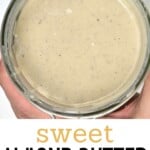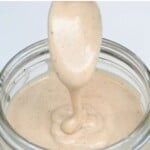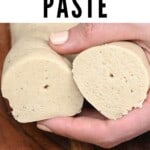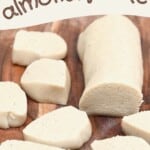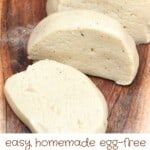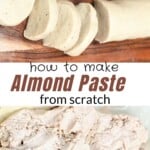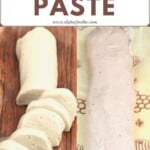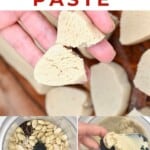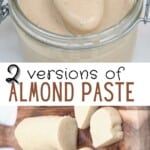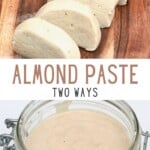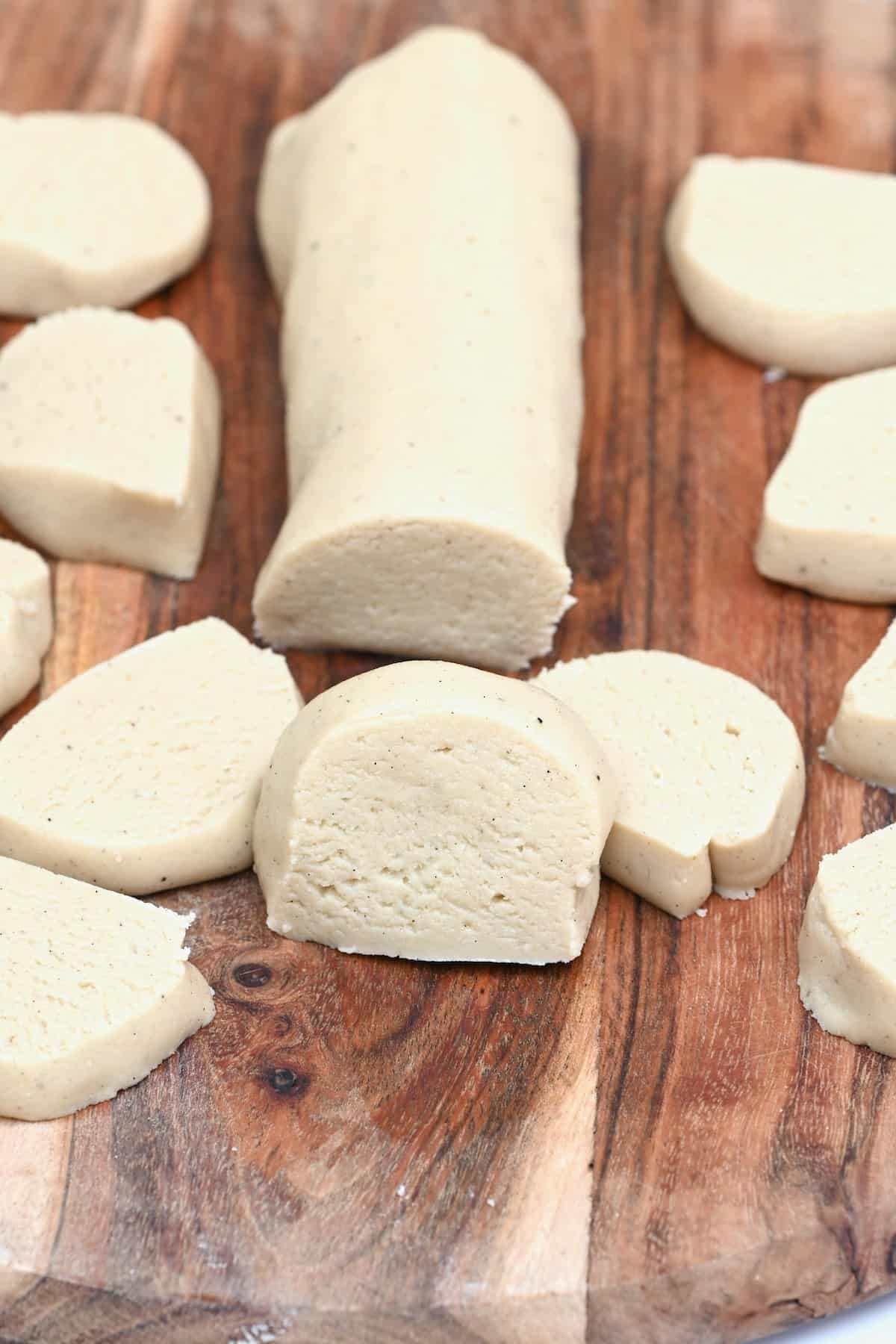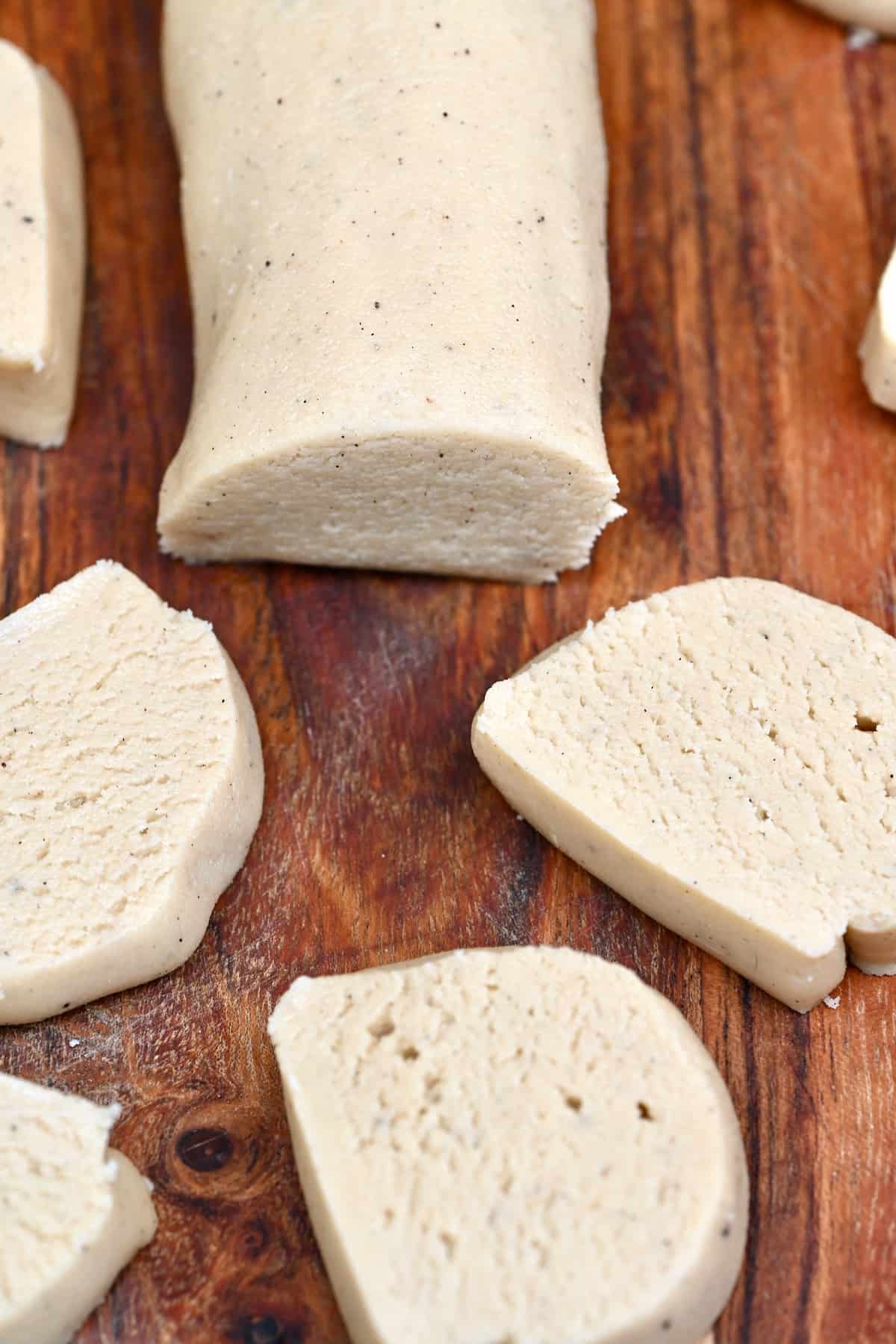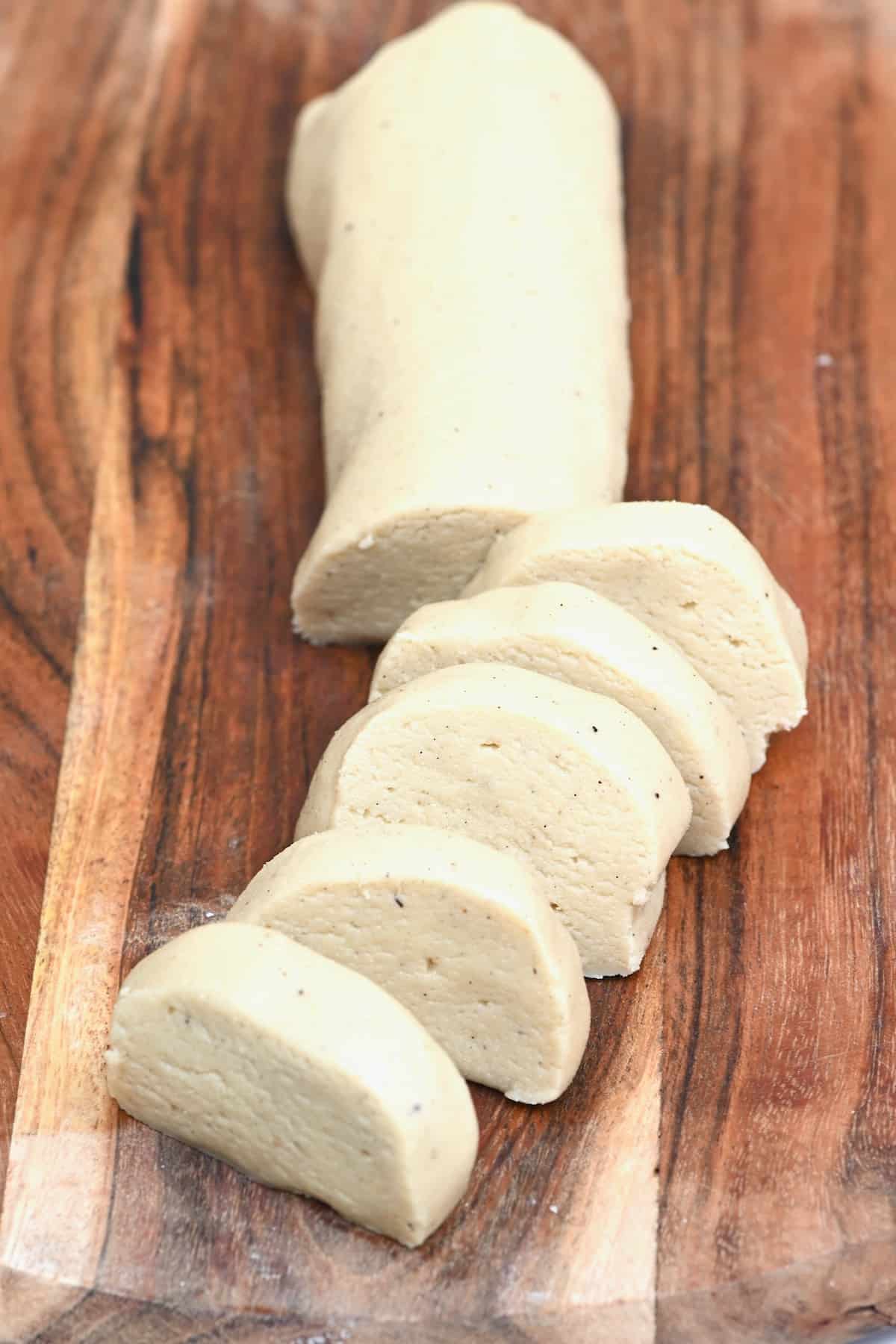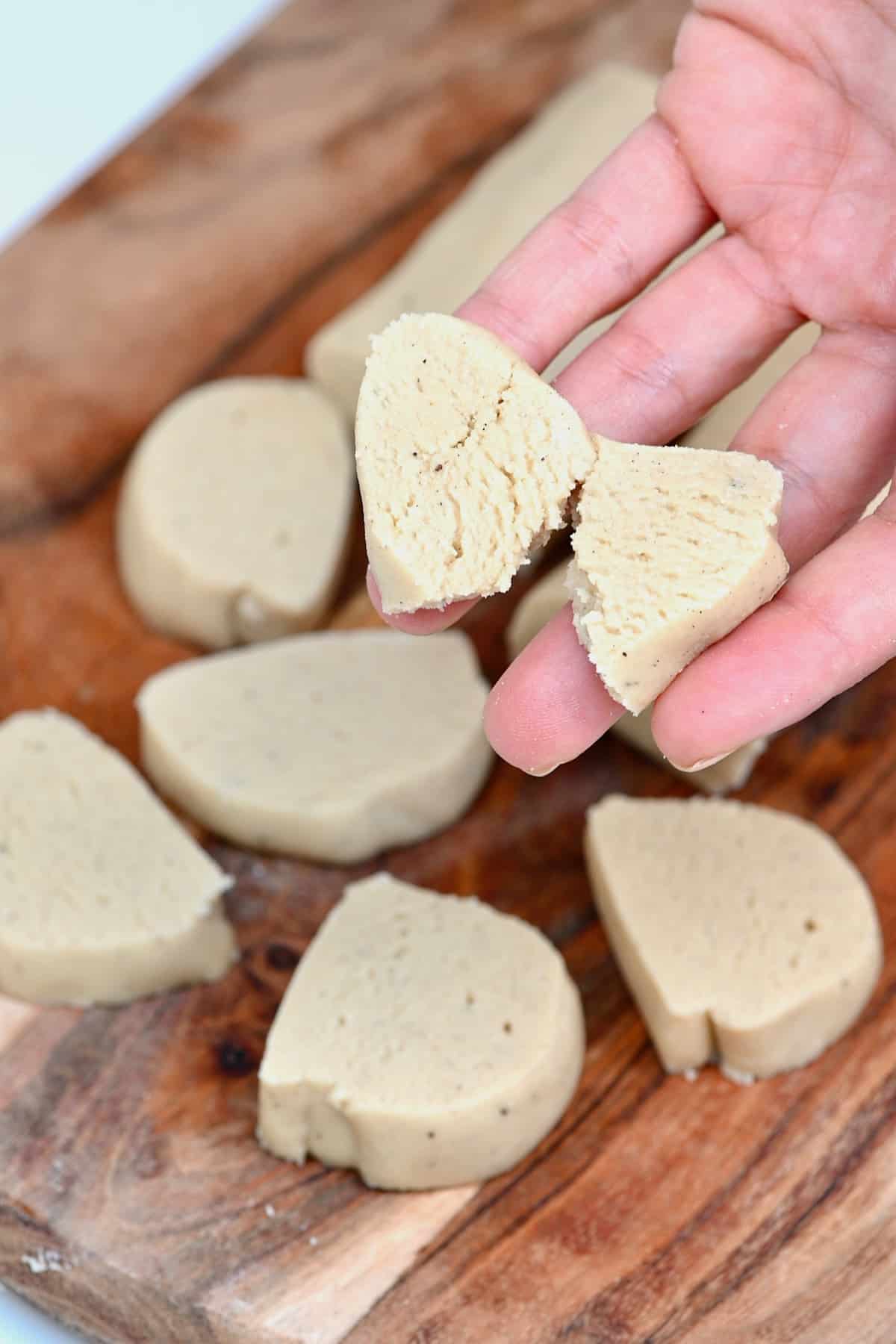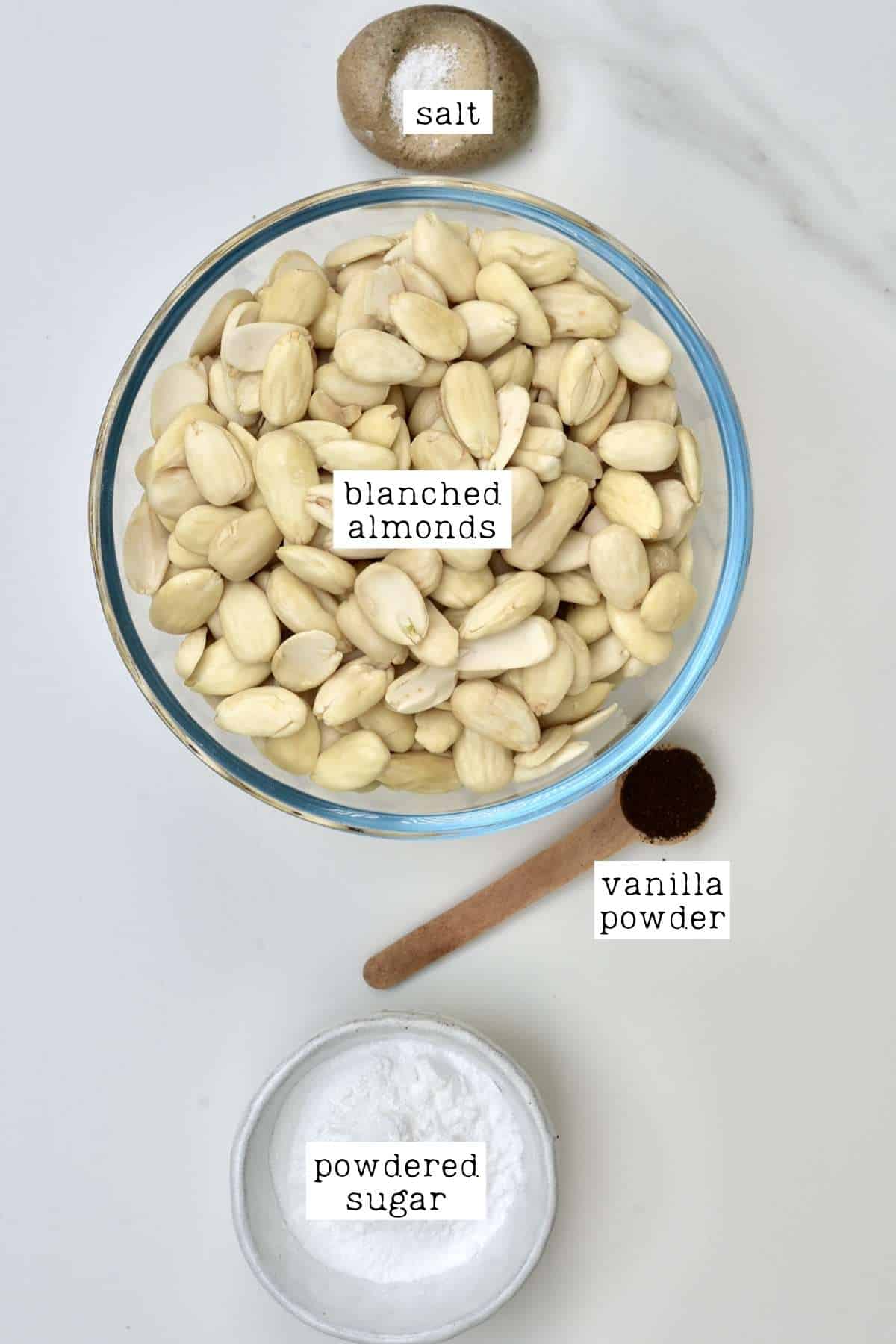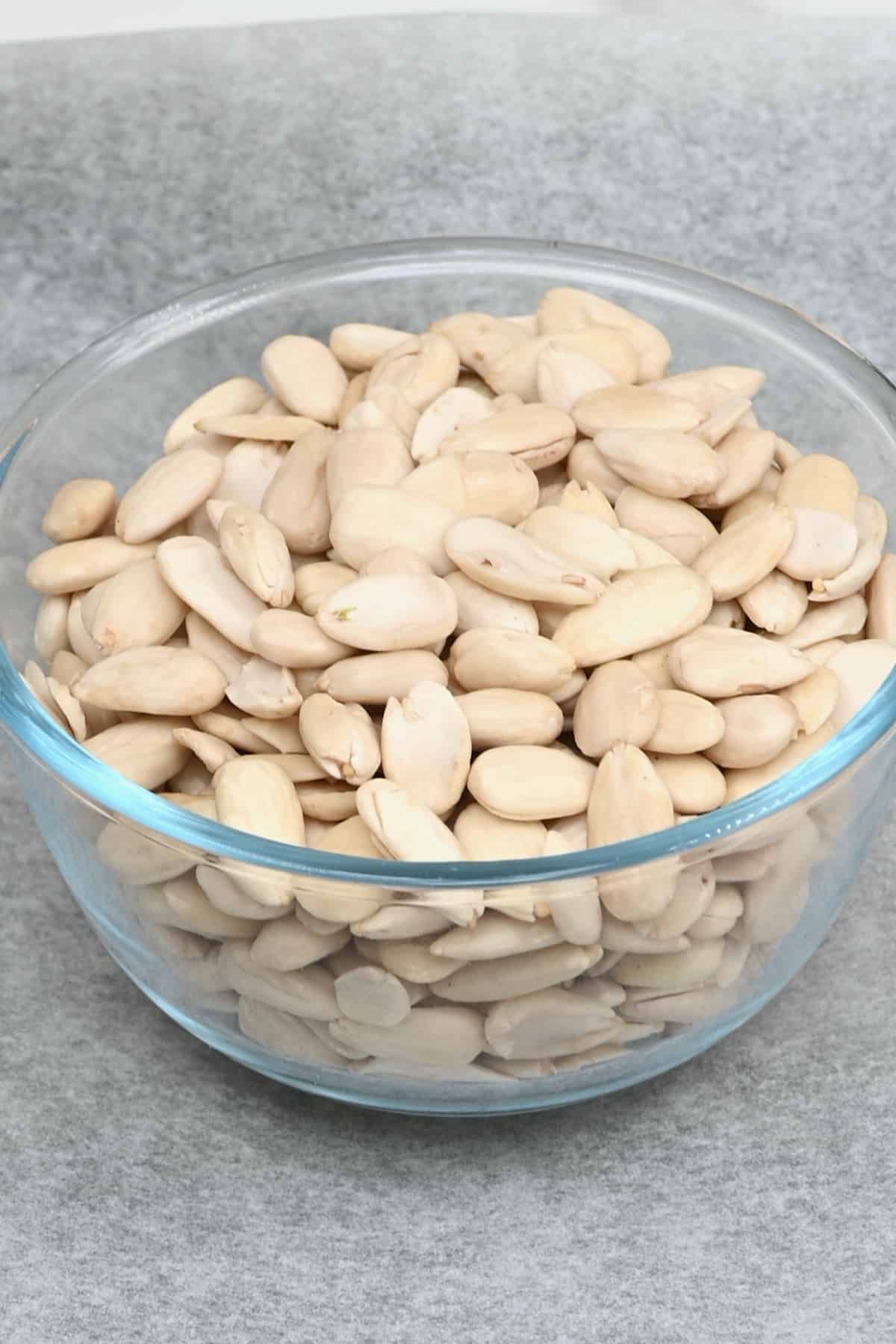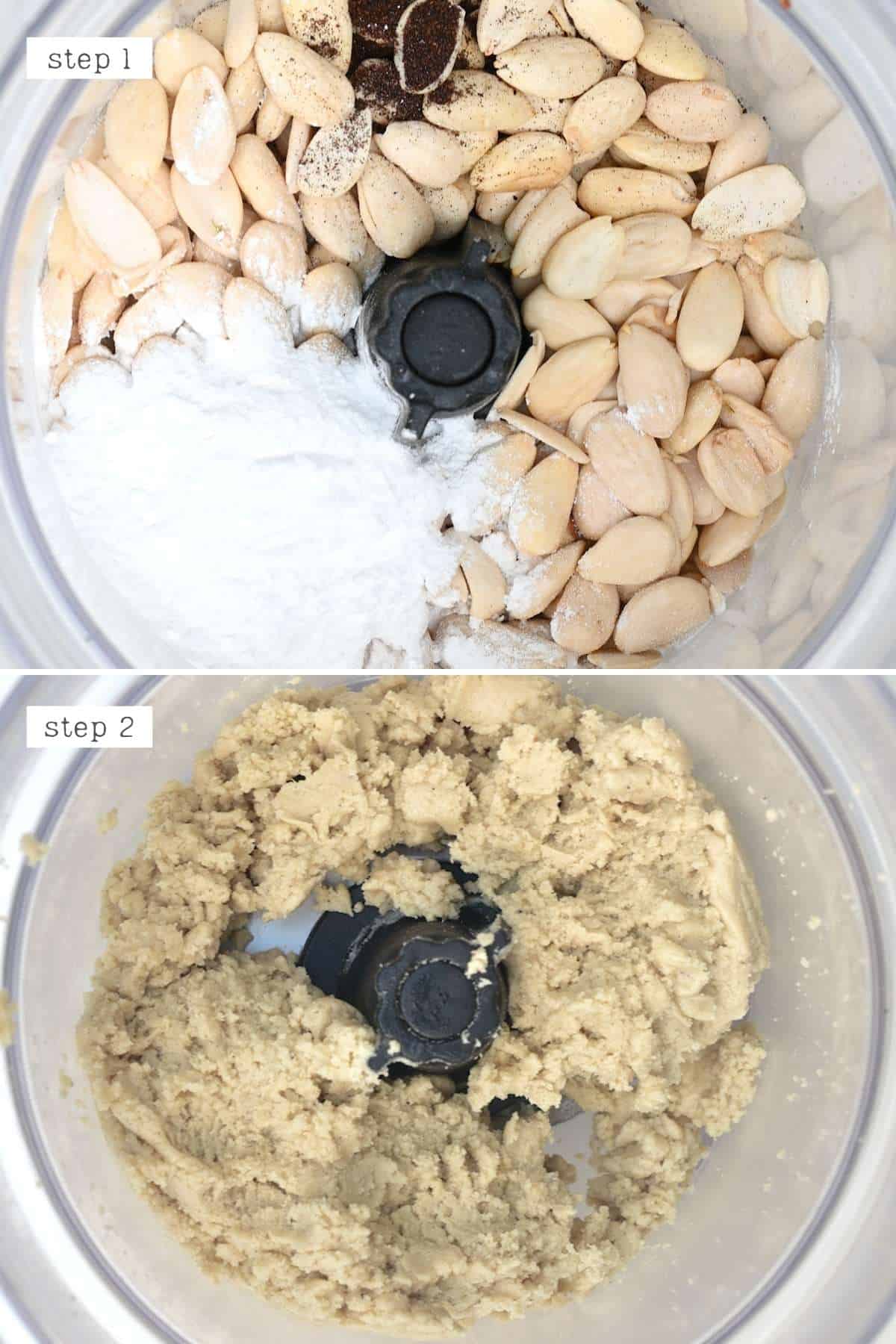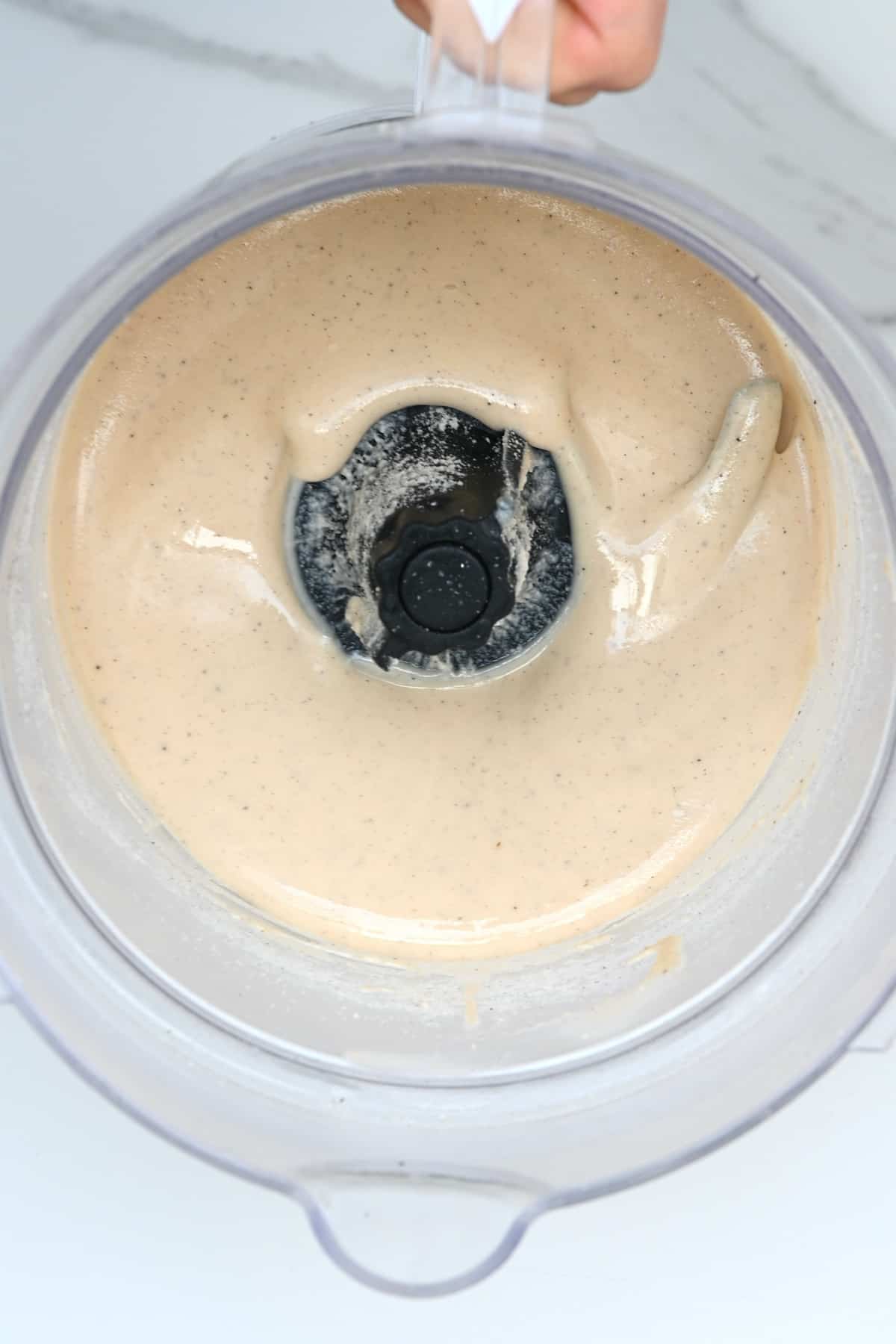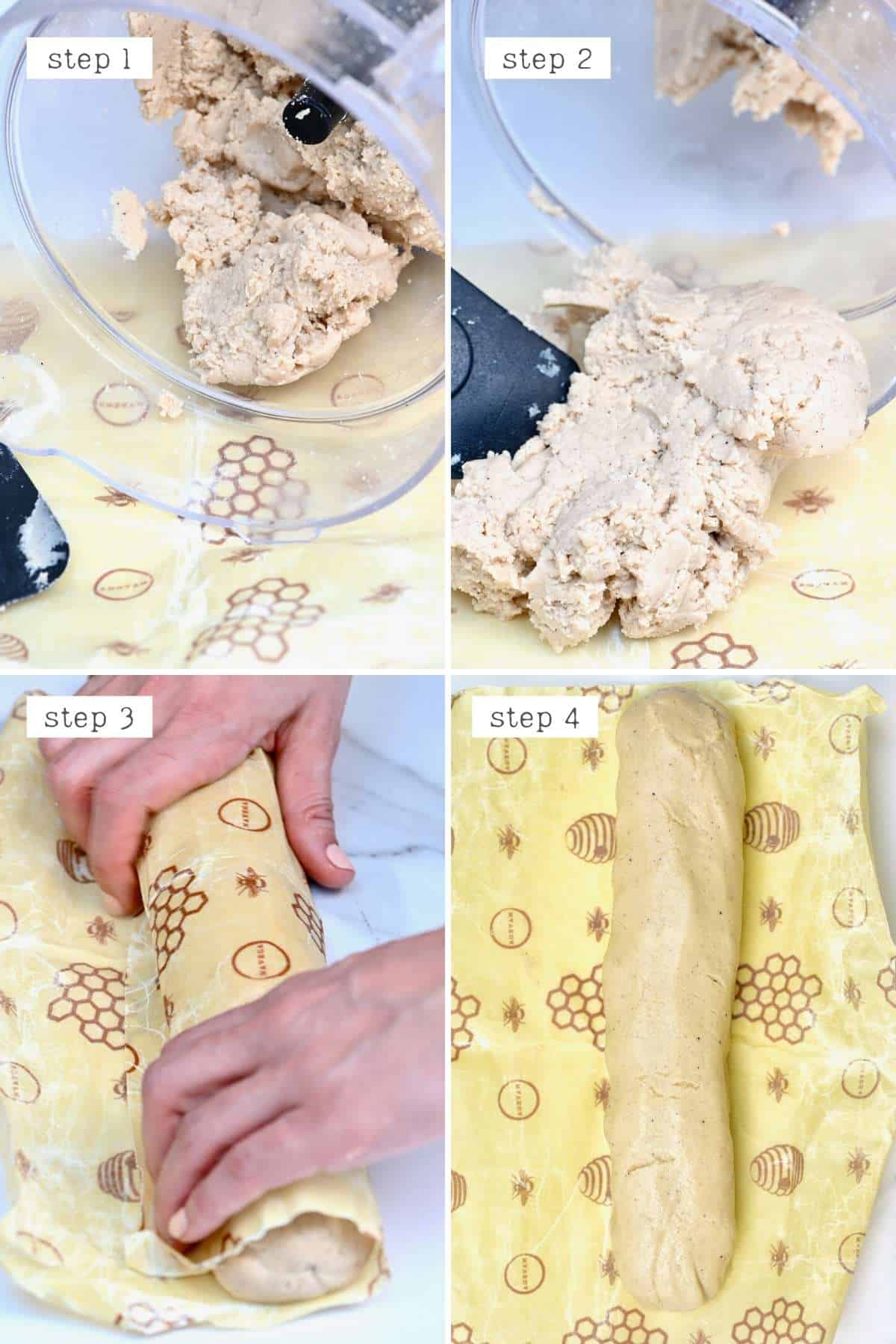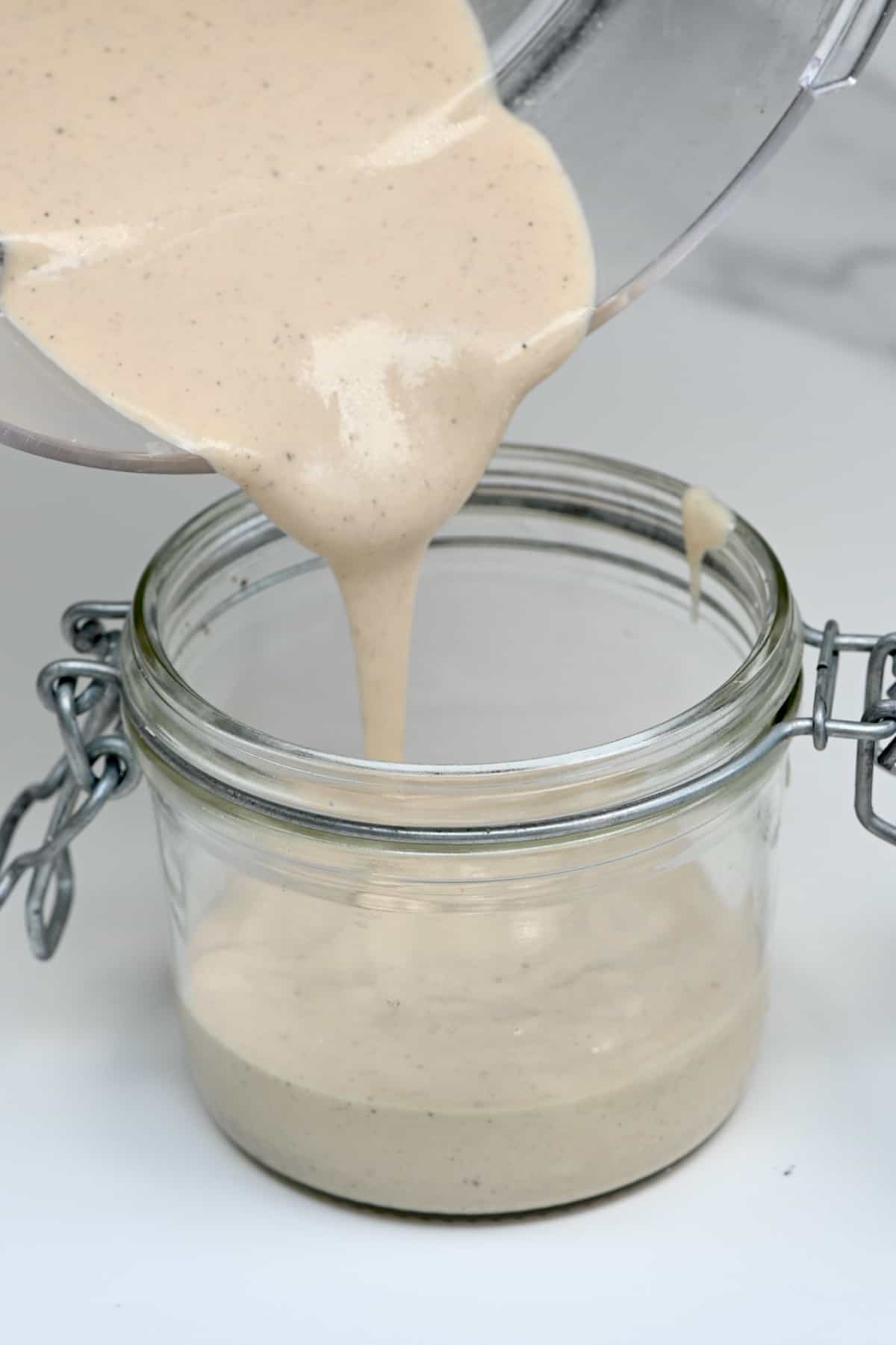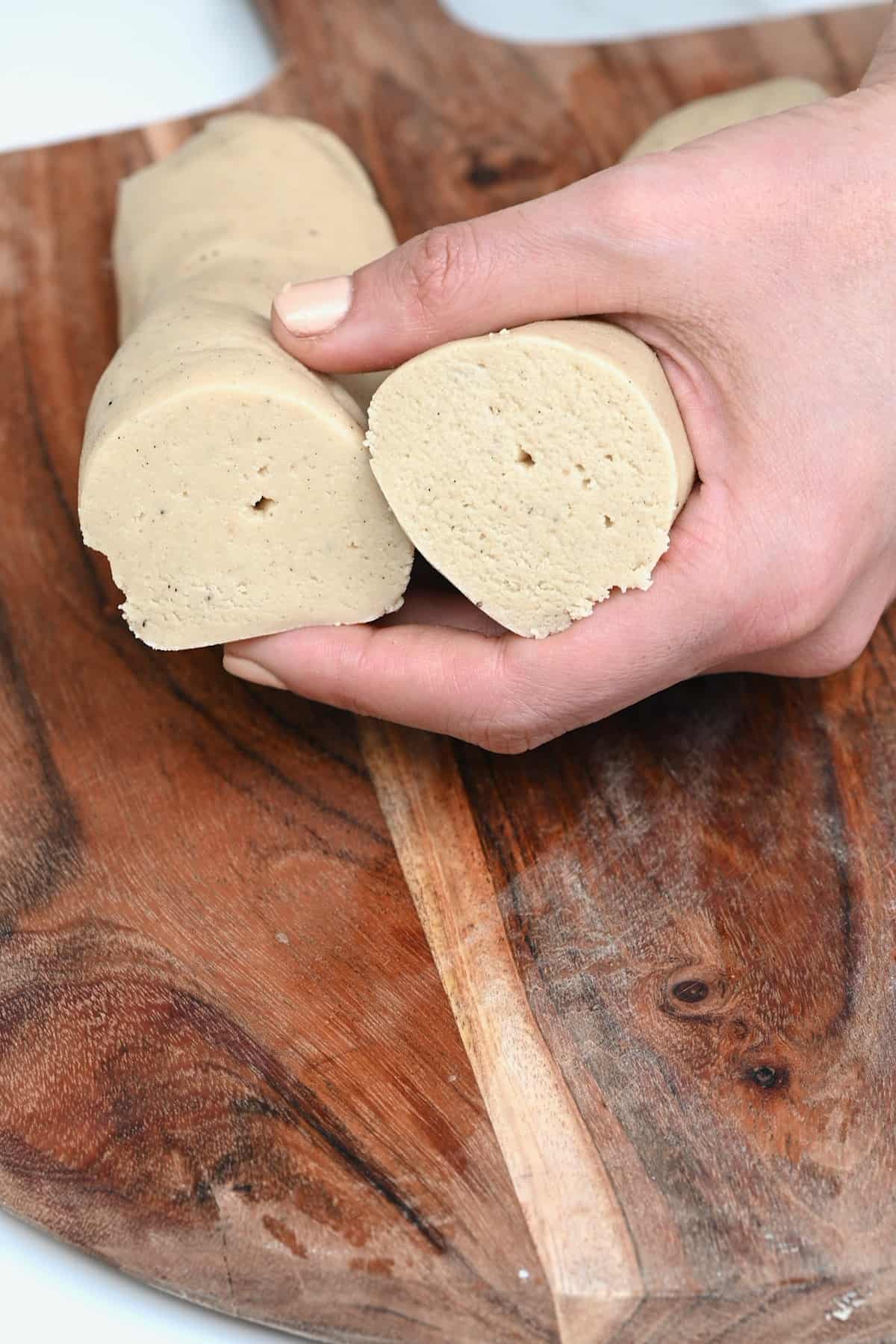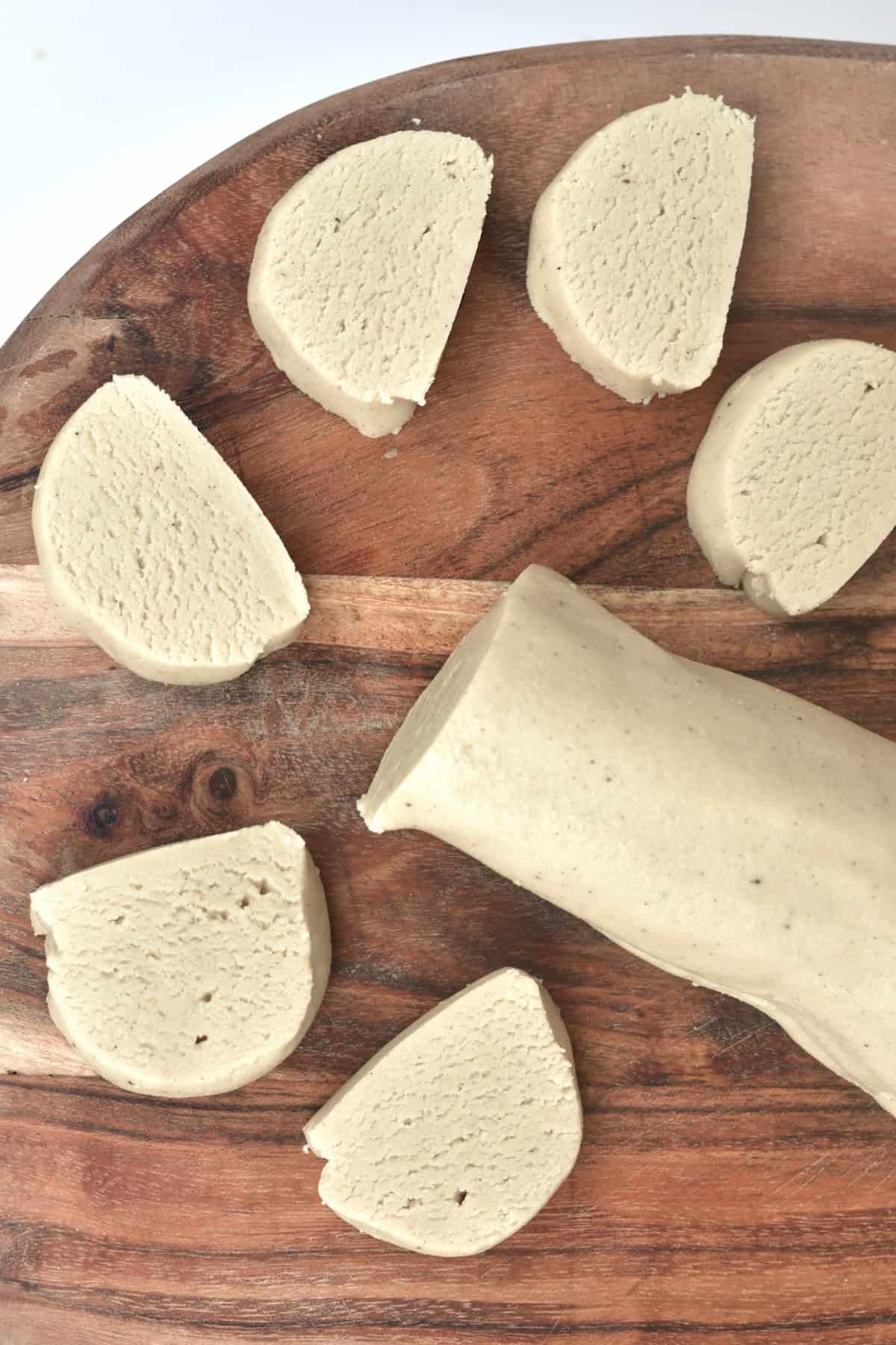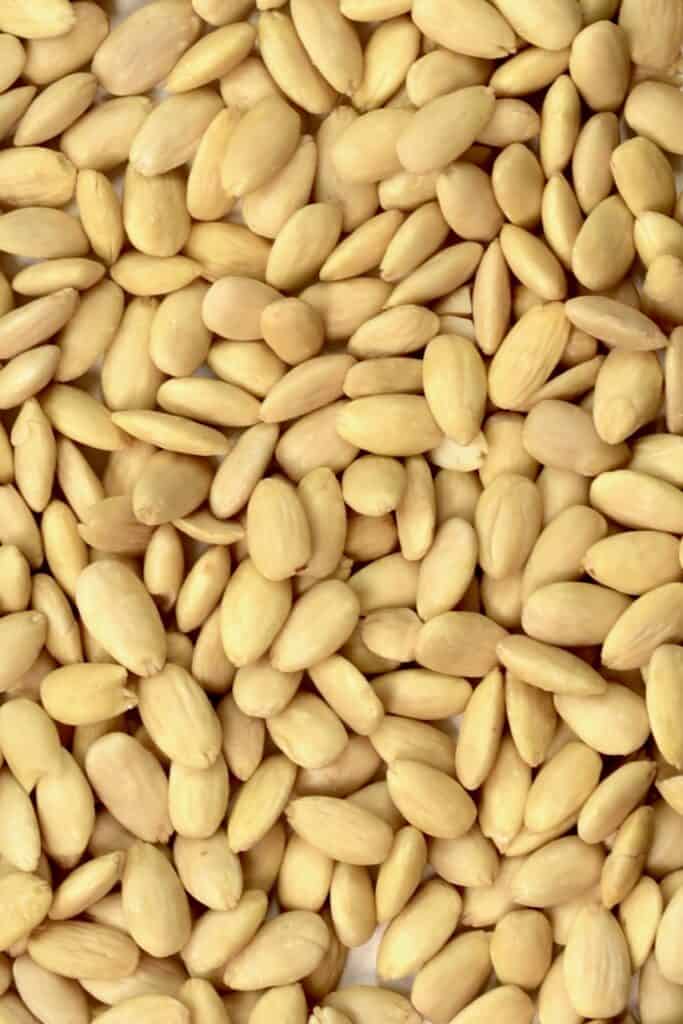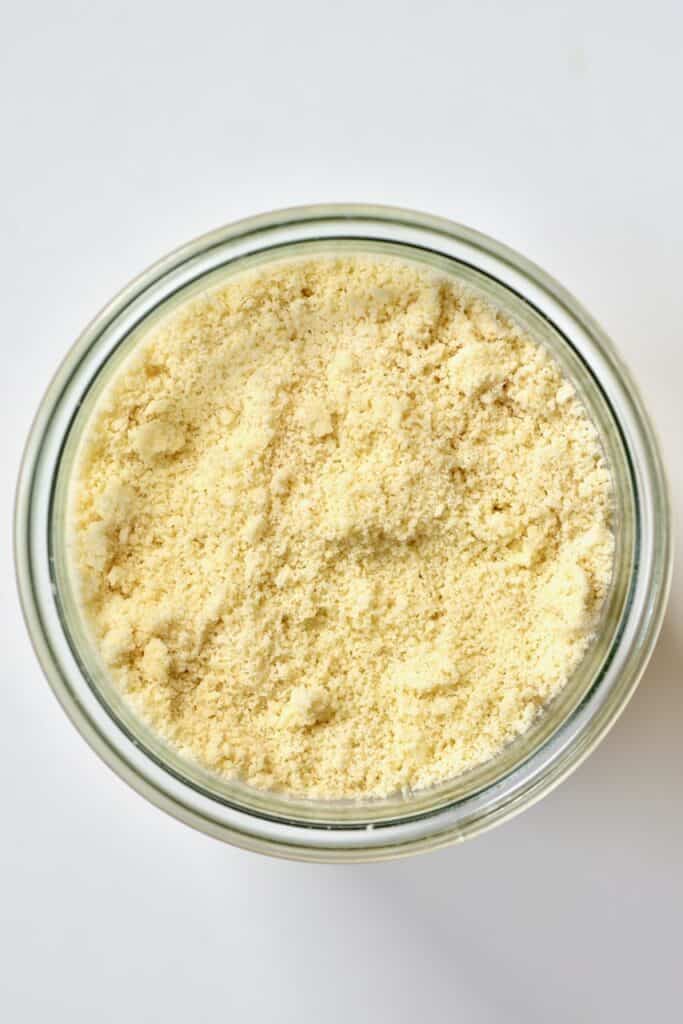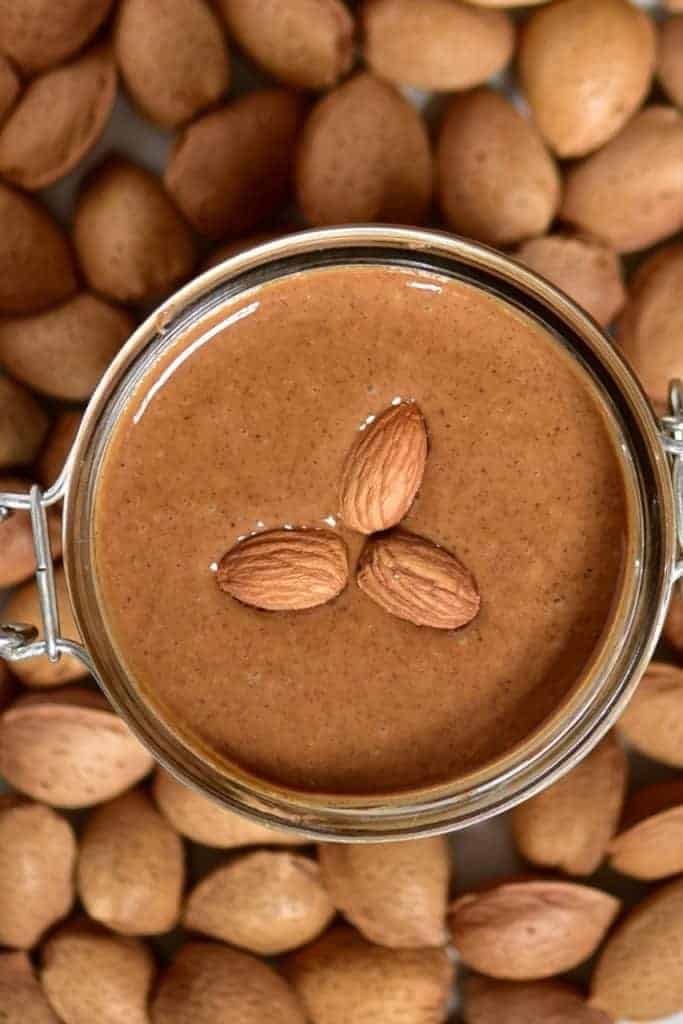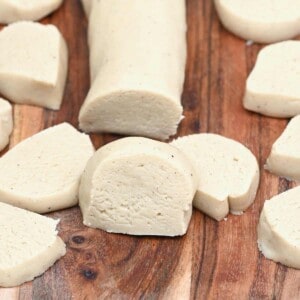Over the years, I’ve shared all sorts of simple almond DIYs on the blog, including almond butter, almond flour, almond yogurt, and almond milk (recently including a ‘2-minute’ hack!). Now it’s the turn of homemade almond paste – perfect for using in desserts and for almond croissants – delish! Using just three base ingredients, you can pull together this almond paste recipe in as little as 5 minutes (when using almond meal) and a maximum of 30 minutes if you’re blanching and processing whole almonds from scratch! Best of all, this recipe is super versatile, most of the time it costs WAY cheaper than using store-bought almond paste, and you can decide to use unrefined sugar or even make a sugar-free version with an alternative!
What is Almond Paste?
Traditional almond paste is made from ground blanched almonds and sugar in a 1:1 ratio with small amounts of other ingredients like oil, eggs, water, or syrup to act as a binder. Plus, almond extract is often added to ramp up the flavor. It’s primarily used as a filling for all kinds of pastries, tarts, and chocolates in different countries. For example:
In France, it’s often used within ‘almond croissants‘ and used to top traditional Calisson candy.In America, it’s the main ingredient in a ‘bear claw.’And in Nordic countries, it’s used extensively throughout pastries, cookies, muffins, and other baked goods like ‘semla’ (a stuffed bun), ‘kringle’ (a type of pretzel), etc.
Side note: In the UK, the terms are used interchangeably, and most recipes calling for almond paste will mean marzipan.
Marzipan vs. Almond Paste
Technically, the two are very similar. They are both a paste made from almonds with similar ingredients – almonds, sugar, water, and sometimes egg whites. However, almond paste tends to contain a much higher ratio of almonds compared to sugar (marzipan contains practically half the almonds but twice the sugar!). In fact, almond paste can be used as an ingredient WITHIN homemade marzipan. The result is that marzipan is very smooth with a much sweeter flavor and texture that is easier to roll out (because of the extra sugar). In contrast, almond paste is often (but not always) coarser and less sweet. Marzipan is often used like a fondant to cover cakes and sweets or colored and molded into shapes (like fruits) to eat like candy. In comparison, almond paste is more often an ingredient or filling within baked goods and pralines. The two should not be used interchangeably when made the traditional way, though you could adjust almond paste into marzipan with additional sugar and egg whites. However, this recipe is egg white-free and could technically be used as vegan marzipan with a few recipe tweaks. As I said above, almond paste is actually an ingredient within marzipan, so it’s easy to adjust.
The Ingredients
If you find that your machine isn’t powerful enough to do the process without some form of liquid binder then you could choose from one of the below.
Water: many almond paste recipes call for egg whites as a binder. Since this recipe is egg-free and uses powdered sugar, you’ll need a little water to help you form the malleable dough. You could also use almond milk and may also be able to use an aquafaba egg – however, I haven’t experimented with that.
OR
Liquid sweetener: instead of powdered sugar, you can use agave syrup, rice malt syrup, or honey (not vegan). The amounts will change depending on which you use, so you just need to add enough to form a dough (add 1 Tbsp then 1 tsp at a time until it’s the correct consistency). If using a liquid sweetener, no additional water is needed, but I recommend including the pinch of salt!
Optional Add-ins
Almond extract: Though this isn’t necessary, adding almond extract can pack in a ton of concentrated almond flavor and is often used in almond paste recipes.Rosewater: Rosewater (food grade!) is traditionally an ingredient for marzipan but will taste delicious with this almond paste, too. Add 1/2 tsp, taste, and adjust to personal preference.
How to Make Almond Paste
Step 1: Prepare the almonds
If you’re starting with whole, unblanched almonds, you’ll first need to blanch them. If you’re beginning with blanched, slivers, or almond meal/flour – skip this step.
Step 2: Process the almonds
Depending on whether you’re using whole, slivered, or almond meal/flour, this process will take a different amount of time. If wanted and depending on your machine, you can process the almonds a bit by themselves – just enough for them to be like almond meal or a slightly gritty almond flour consistency. I directly add the whole blanched almonds with the rest of the ingredients. If you’re using powdered sugar: Add all the ingredients and process until the mixture starts to clump up into a dough. It should be a malleable mixture that is formable but not too tough. If you’ve added almond extract, taste the almond paste and adjust if needed. If you’re using liquid sweetener: Begin by adding 1 Tbsp of the syrup/water to the almond and then increase 1 tsp at a time until it forms a malleable dough – voila! Add a pinch of salt and any additional ingredients at the same time as the first spoonful of syrup. Then taste and adjust if needed. For a more spreadable, almond butter like consistency: If you prefer to use this almond paste like you would any other nut butter, then you can simply keep on blending until you achieve a runny consistency. Voila – a sweet blanched almond butter.
Step 3: Shape and store the almond paste
Traditionally almond paste (and marzipan) and stored rolled up in a log. To do this, transfer the paste to a sheet of beeswax wrap, parchment paper, or clingfilm. Fold the paper/film over the mixture and use it to help you shape a log. Then twist the ends like a Christmas cracker to seal. Alternatively, if you wanted it slightly softer and more spreadable, simply store it in an airtight container. If you make a runny almond paste (sweet blanched almond butter), store it in an airtight container.
How to Use Almond Paste
There are tons (with a capital T) of almond paste recipes to choose from. As well as the few options I already mentioned at the beginning of the post, here are just a few more:
Cobblers (like peach cobbler)Apple tart or almond torteAlmond croissantsBear clawsGalette des Rois (aka King Cake)A filling for sweet breadsCookies: like Italian pignoli, Italian rainbow cookies, almond cloud cookies, amaretti, and German almond horns/crescents (mandelhörnchen)Almond macaroonsMarzipan: Almond paste is technically one of the ingredients used to make marzipan. You just need to add more powdered sugar and a ‘binding’ ingredient for homemade marzipan.
How to Store?
Fridge: The prepared almond paste can be stored wrapped tightly (and then kept in a bag for further ‘airtight’ storing) or in an airtight container for up to 10 days if you use water or several weeks using syrup or without added liquid (3-4 weeks). Freezer: Make sure to wrap the almond paste well (to avoid freezer burn). I like to wrap it and then place that in a freezer-safe bag. Store in the freezer for up to 3 months. Allow the paste to come back to room temperature before using.
Recipe Notes & Variations
Other Almond Recipes/DIYs
How To Blanch Almonds In Five MinutesHow To Make Almond FlourSimple Two-Ingredient Homemade Almond ButterHow To Make Almond Milk In 2 Minutes (Instant Nut Milk)Zero Waste Homemade Almond MilkVegan Ricotta Cheese (Almond Ricotta)How To Make Almond Meal
If you try this egg-free almond paste recipe, I‘d love to hear your thoughts/questions below. Also, I‘d really appreciate a recipe card rating below, and feel free to tag me in your recipe recreations on Instagram @Alphafoodie!
